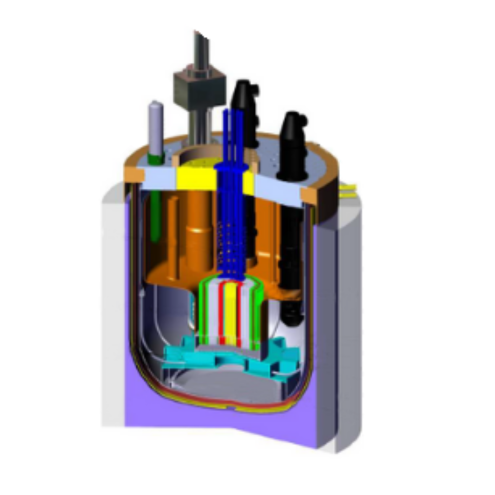
The ASTRID project was initiated in 2010 and ended in 2019 after it was decided to postpone the construction of the demonstrator by the French government in agreement with the French industry and the CEA.
During this project, three main configurations were subjected to a full bottom-up design:
- ASTRID 600 Steam: this configuration was completed in late 2015 at the end of its conceptual design
- ASTRID 600 Gas (nitrogen): from 2015 to late 2017
- New ASTRID Steam (or ASTRID 150): from 2017 to late 2019, with a reactor configuration at the end of its pre-conceptual design.
Each configuration was developed in response to a set of functional specifications taking into account a number of high-level requirements expressed by the project owner.
The ASTRID 600 core design (1500 MWth) was driven by strong nuclear safety objectives, such as achieving a negative reactivity coefficient in the case of sodium voiding (CFV concept) and an architecture promoting the removal of decay heat (EPurR system).
This architecture is designed to eliminate any possibility of losing the decay heat removal system in the long-term, an unacceptable consequence of which could be the deterioration of the primary system structures.
The design work on the ASTRID 600 Gas version produced reactor characteristics that were generally very similar to the ASTRID 600 Steam version, excepting the power conversion system (PCS) and the secondary cooling systems. Decay heat removal system comprises two active systems and two passive systems.
In a context where it has been decided to postpone the deployment of the sodium-cooled fast reactor (SFR) technology, the CEA has been asked to propose a pre-conceptual design that meets a different set of specifications: a reactor to support the qualification of design options for the future technology.
A proactive design-to-cost approach provided the opportunity to review the technical requirements in collaboration with the designers, to design the systems to reflect the needs as close as possible, and to integrate these systems in smaller and fewer buildings through a combination of innovations and proven technologies.
The New ASTRID configuration (called ASTRID 150) is based on a reactor power of 400 MWth, i.e. about 150 MWe, and a proven fuel type like the one used in the Superphenix SFR, so as to reduce risks and qualification requirements.